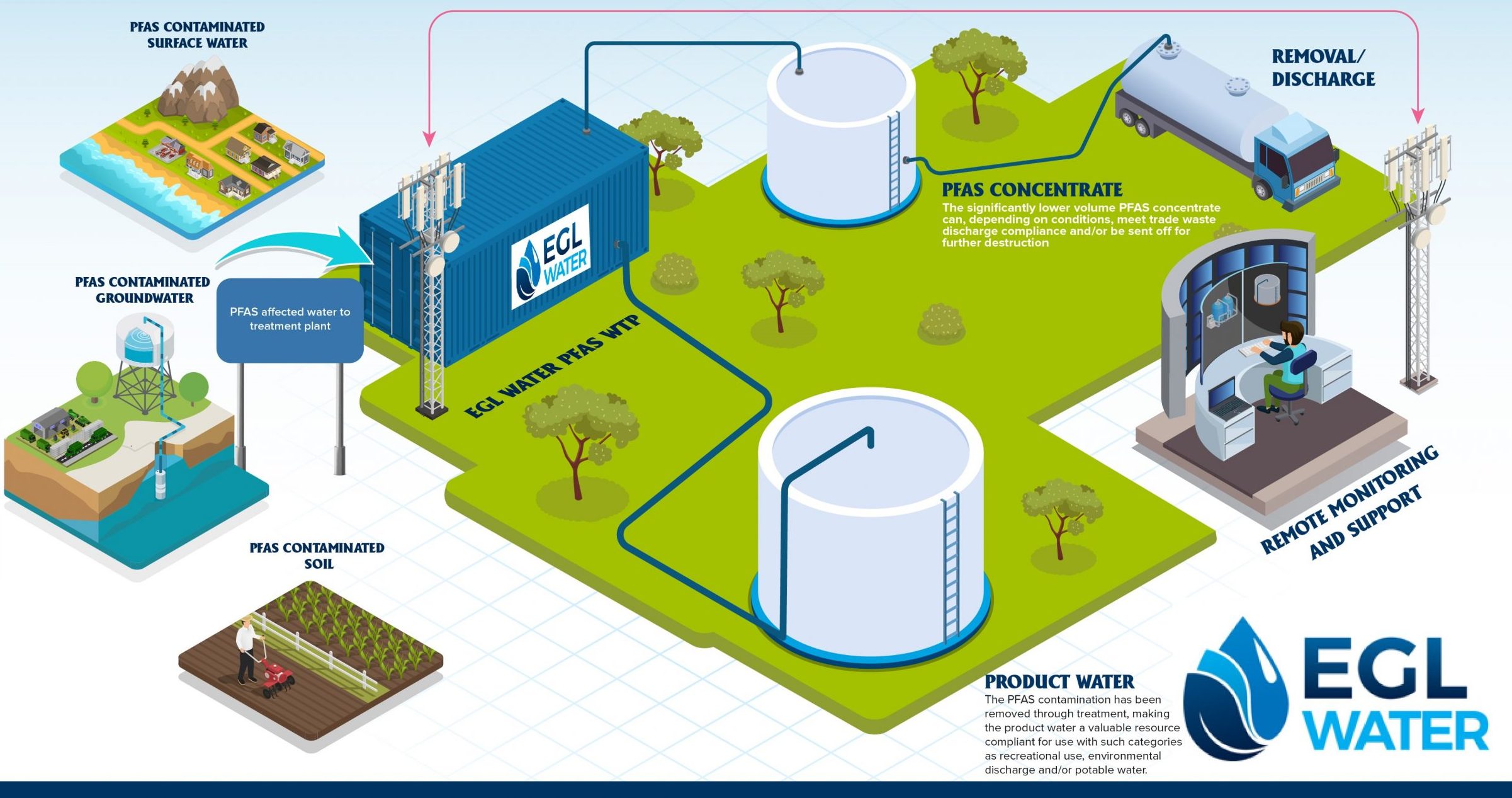M270 PFAS Treatment for Eco-Friendly Waste Management
Wiki Article
Innovative PFAS Treatment Solutions for Safer Water
The increasing frequency of PFAS contamination in water materials necessitates a crucial evaluation of cutting-edge therapy services. Advanced purification innovations and novel chemical therapies present promising avenues for lowering these persistent contaminants. In addition, emerging bioremediation techniques supply a more lasting strategy to dealing with PFAS difficulties. As governing frameworks continue to adapt, comprehending the efficiency and scalability of these solutions ends up being critical. What implications do these advancements hold for public health and wellness and environmental restoration, and how can stakeholders successfully implement them in varied contexts?Introduction of PFAS Contamination
PFAS contamination has actually arised as a significant ecological and public health and wellness issue. Per- and polyfluoroalkyl materials (PFAS) are a team of synthetic chemicals recognized for their determination in the atmosphere and human body, leading them to be typically referred to as "permanently chemicals." These compounds have actually been commonly utilized in various sectors, consisting of firefighting foams, water-repellent materials, and food product packaging, mostly because of their water- and grease-resistant buildings.The extensive usage of PFAS has led to their detection in soil, water supplies, and also in the blood of humans and pets. Researches have actually linked PFAS direct exposure to countless wellness concerns, including developing impacts in infants, immune system dysfunction, and numerous forms of cancer cells. In addition, the environmental perseverance of these compounds complicates their degradation and removal, raising problems concerning long-lasting ecological impacts.
Governing bodies are progressively carrying out rigorous standards to keep an eye on and reduce PFAS degrees in drinking water and various other environmental mediums. As understanding of PFAS contamination grows, it has become essential for communities and markets to look for reliable therapy services to alleviate exposure and safeguard public health.
Advanced Filtration Technologies
As the seriousness to address PFAS contamination magnifies, progressed filtering technologies have emerged as a pivotal element in the remediation efforts intended at eliminating these persistent chemicals from water resources. These technologies take advantage of advanced devices to properly target and capture PFAS compounds, which are infamously resistant to conventional therapy approaches.Among the most appealing approaches is using granular turned on carbon (GAC), which adsorbs PFAS particles as a result of its high surface and permeable framework. This technique has been extensively implemented in both community and commercial settings, showing significant decreases in PFAS concentrations. In addition, ion exchange resins have actually gotten grip, especially created to precisely bind PFAS ions from water, thus promoting their removal.
Membrane layer filtering innovations, such as reverse osmosis and nanofiltration, likewise reveal efficiency in PFAS removal by physically dividing pollutants from water - pfas management. These systems can accomplish high degrees of pureness, making them appropriate for alcohol consumption water applications
Chemical Treatment Innovations
Many chemical therapy developments are being explored to properly address PFAS contamination in water materials. One promising method includes using sophisticated oxidation procedures (AOPs), which utilize powerful oxidants such as ozone, hydrogen peroxide, or chlorine dioxide incorporated with UV light to damage down PFAS compounds right into less harmful compounds. This approach has actually demonstrated efficiency in lab setups, showing possible for scalability in my latest blog post real-world applications.An additional ingenious strategy is the growth of ion-exchange materials specifically designed to target PFAS. These resins can selectively adsorb PFAS compounds from water, permitting their removal during therapy processes. Current improvements have boosted the performance and ability of these materials, making them a positive alternative for water treatment facilities.
In addition, scientists are investigating using chemical agents like persulfate and ferrous ions to enhance the degradation of PFAS in contaminated water. These representatives can induce chemical reactions that assist in the break down of consistent PFAS compounds.
Arising Bioremediation Methods
Recent developments in chemical treatment technologies have actually led the way for checking out bioremediation methods as a practical option for resolving PFAS contamination. Bioremediation takes advantage of the all-natural metabolic procedures of bacteria to break down or change contaminants, making it an enticing method for taking on consistent impurities like PFAS.
Emerging methods in bioremediation include making use of genetically engineered microorganisms that can specifically target and break down PFAS substances. These microbial strains are being developed for their enhanced degradation capabilities, boosting the effectiveness of the removal procedure. Furthermore, researchers are checking out the capacity of plant-assisted bioremediation, where particular plant varieties may uptake and sequester PFAS from infected dirt and water.
Another encouraging method is the application of bioaugmentation, which entails introducing helpful microorganisms right into polluted atmospheres to increase special info the deterioration of PFAS. This method can facilitate faster removal timelines and enhance general efficiency.

Regulative Frameworks and Requirements
A comprehensive governing framework is essential for efficiently managing PFAS contamination and ensuring public health security. The boosting recognition of per- and polyfluoroalkyl substances (PFAS) as toxic wastes has actually triggered numerous federal and state agencies to develop standards that control their presence in water products. The U.S. Environmental Protection Agency (EPA) has developed wellness advisories and is working towards establishing enforceable limitations for PFAS in drinking water.State-level laws vary substantially, with some states taking on more stringent standards than those recommended by the EPA. These guidelines frequently include optimum contaminant degrees (MCLs) for details PFAS compounds, surveillance needs, and reporting commitments for water energies. Furthermore, emerging structures concentrate on the removal of contaminated sites, highlighting the demand for efficient treatment modern technologies.

Conclusion
Finally, the advancement and application of cutting-edge PFAS treatment options are crucial for addressing the prevalent concern of water contamination. Advanced purification modern technologies, chemical treatments, and emerging bioremediation strategies collectively offer a complex strategy to effectively decrease and deteriorate PFAS degrees. As regulative frameworks proceed to progress, incorporating these innovations will certainly be necessary to secure public health and restore the integrity of infected water resources, ultimately adding to a cleaner and more secure atmosphere.Report this wiki page